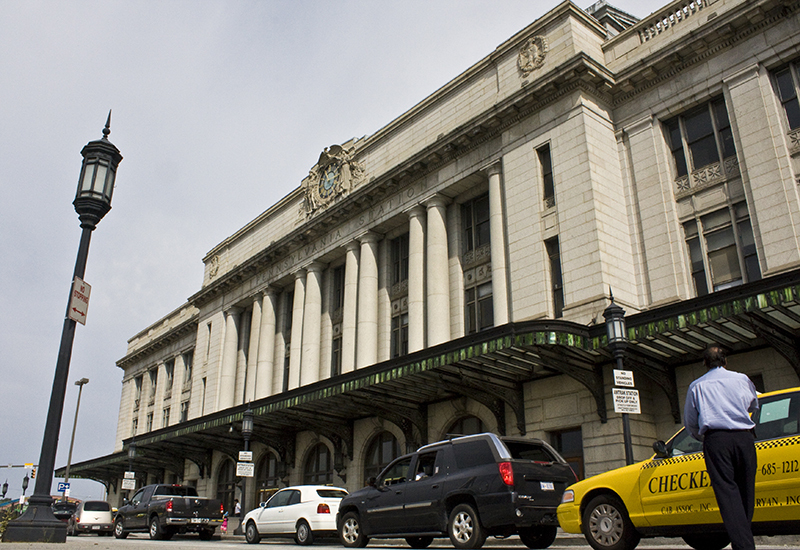
[Update 2/5/20: This story has been updated to indicate that further funding has been secured]
The redevelopment of Penn Station is a project with a lot of moving parts. Talk of what could happen to enhance the historic building has often been done in the abstract while stakeholders waited to see if proper funding could be secured. But with the recent awarding of a crucial $3 million historic state tax credit, things are finally starting to take shape.
“People have been talking about this for a while,” says Cross Street Partners vice president John Renner, who is working with Beatty Development Group and Amtrak to renovate the station’s Head House—the century-old building whose design has American Renaissance roots. “It takes work to earn legitimacy. This credit is the linchpin in a way of the project moving forward.”
The Head House renovation is a $70 million dollar endeavor, of which $53 million has now been raised with $50 million funded by Amtrak. The remaining $17 million will be broken up among another expected $3.5 million historic tax credit, and funding from banks or private investors.
The historic tax credit is a designation given by Governor Larry Hogan, with the purpose to strengthen economies within Maryland and create new jobs and opportunities for growth. Penn Station was one of eight recipients of the credit, among other buildings including the Strawbridge United Methodist Church in New Windsor and Glenn L. Martin Plant No. 2 in Middle River.
“The award of these historic tax credits is an important step toward revitalizing Baltimore Penn Station,” says Brian Taylor, the Amtrak program manager for the Baltimore Penn Station Master Developer Partnership, an umbrella group consisting of Amtrak, Beatty, and Cross Street. “Our shared vision for the future of the station is to promote the development of a vibrant, mixed-use, transit-oriented development with Penn Station at its core.”
Back in August, a preliminary meeting was held to educate the public on the grand vision for the station and the area surrounding it. Community activation, increasing residential office space, and making the streetscape more inviting were at the forefront of these talks. What’s most important now, though, is that the redevelopment team has enough money to continue its search for occupants to fill the spaces they’re creating.
“We want retail offerings that are conducive to the neighborhood,” says Tim Pula, Beatty’s vice president of community development. “Penn Station should be a place where people come not just because they’re there to take a train. We really want to try and find local and regional businesses—that adds to its character and uniqueness.”
At the moment, efforts to restore and preserve the building that Taylor calls “an important historic asset of the city,” are well underway. With this tax credit, developers can now scout prospective tenants having secured the most difficult part of their funding.
“Within the constraints that the Head House is an existing building and a historic landmark, we’ll customize the space to the needs and aspirations of our tenants,” Renner says. “The hope is that the state tax credit award makes the project seem more credible.”
The Head House initiative is a portion of a much larger overhaul, estimated at $400-600 million, of the Penn Station complex. This includes the renovation and installation of new Acela train platforms funded by Amtrak—which will double the current amount of the famously fast trains—further preserving the space, and creating mixed-use opportunities in the space surrounding the Head House.
“Something that’s frustrated me about Baltimore is that you have these great pockets, but they don’t blend together seamlessly,” Renner says. “I see Penn Station as a connector.”
And now, the vision is moving full steam ahead. The team recently announced equity funding from Blueprint Local, which invests in entrepreneurs and real estate opportunities in economically distressed areas across the country.
It is Blueprint Local’s first investment in Baltimore under its Opportunity Zone Platform, which addresses designated Opportunity Zones around the country that prioritize private investment over public funding in jumpstarting a given area. Blueprint Local’s contribution will help developers proceed with the Penn Station redevelopment plan. More progress updates on rejuvenation efforts are expected throughout 2020, and the team will hold another in a series of public meetings about the project in the coming months.
“We want people to know this is really happening,” Pula says. “This is a very valuable and historic building that is deserving of being rehabilitated. Penn Station is a front door to Baltimore.”